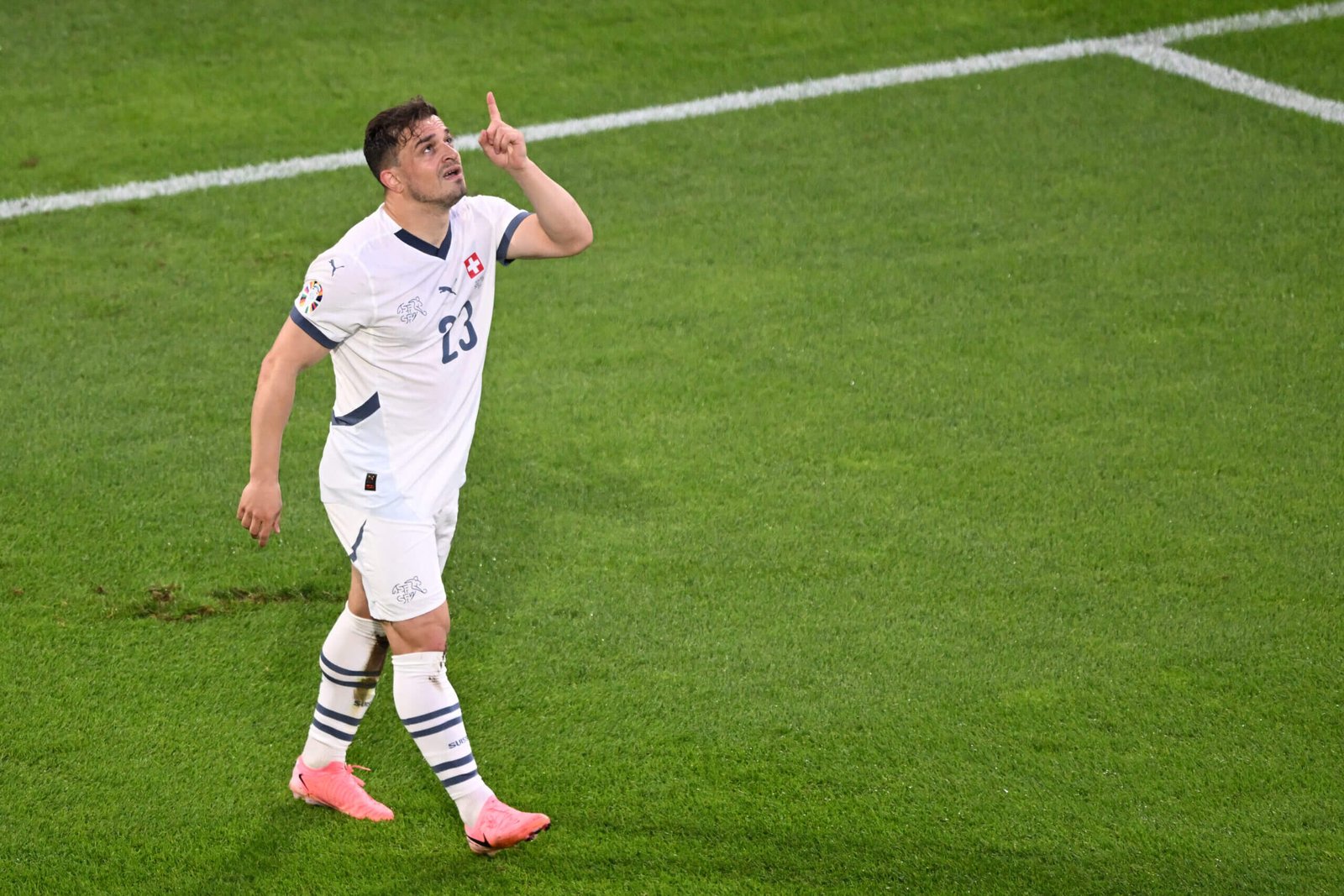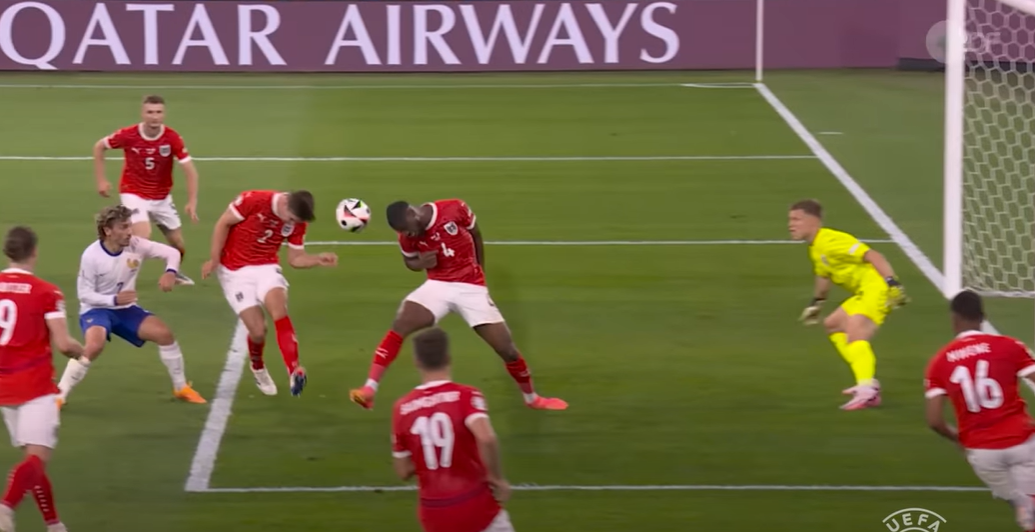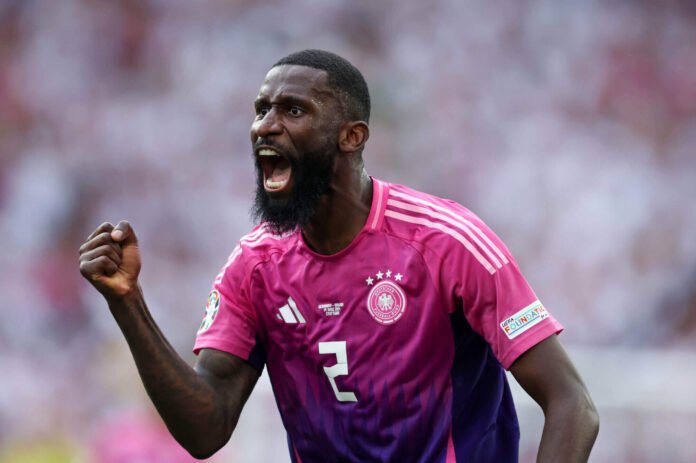Day six of the European Championship saw the second round of games for six teams, one comical own goal and another own-goal reversal, an unexpected draw (if you believe in world rankings) and the first team through to the knockout stage.
Yes, hosts Germany are guaranteed at least one knockout game and it looks like they could be in for a few more after they eased to a 2-0 victory over Hungary in group A. They were also wearing their pink kit for the first time in the tournament, which is the fastest-selling away shirt in the national team’s history.
In the same group we had the first Euros goal scored by a player based in MLS (or North or South America for that matter) as Scotland and Switzerland drew 1-1. And the days games actually began with half of the second round of matches in group B where Albania secured that dramatic draw (2-2) with Croatia.
Our writers run you through the highlights of the day.
Hosts Germany the first team into the knockout phase… so can they win it?
A 2-0 victory over Hungary sent Germany through to the round of 16, and they got there pretty comfortably. Although they have not played any top sides, they look a fearsome prospect and even the better teams will not fancy facing them, especially at home.
How would opponents cope with Toni Kroos dropping in at left centre-back, for example? With Antonio Rudiger (pictured top) being happy to bring the ball out, you will always have somebody to watch even in the back line.
If the Germany full-backs go forward, it pushes Jamal Musiala and Florian Wirtz into central pockets of space either side of Kai Havertz, with Ilkay Gundogan arriving late to back them up, meaning they have four quality players in central areas, and, as we have seen already, some of them are always looking to pick up the ball behind the backs of the opposition midfielders and some are making runs in behind.
If you, as the opponent, use two holding midfielders to try to add numbers in the middle, you will be trying to deal with Gundogan and one of Musiala or Wirtz, possibly both, leaving Robert Andrich spare. He may not be quite as technically proficient as the others, so you may be happy with that, but Andrich is clearly not a passenger.
Musiala celebrates his second goal of the tournament (Photo: Tom Weller/picture alliance via Getty Images)
Basically, they pose plenty of problems, and beyond the individual quality of the players, you have to consider that their movements are incredibly well synchronised: for example, Wirtz will trot inside from the right to bring the opposition left-back inside while Kroos switches the ball to the right wing, so Joshua Kimmich has plenty of space to receive.
They look just about as organised as a club side, which is pretty impressive, and they have good options on the bench, too (if Leroy Sane can keep a high level).
There might be some weaknesses — it will be interesting to see how the full-backs/Andrich react if they are asked to carry the team’s attacking threat, if the opponents pack the middle to take care of Germany’s big guns, and while Rudiger and Jonathan Tah are big, imposing centre-backs, they are not especially quick — but overall, the hosts look capable of doing something special.
At the other end of the spectrum are Croatia, who were held to a draw with Albania, just the 56 world ranking places beneath them at 66 (more on this later) and are now in danger of failing to make it out of the group. You can track all the permutations here.
Sam Lee
MLS history as Shaqiri brings the fire
Some players are just more at home in international football. Xherdan Shaqiri has barely been a factor in a bad Chicago Fire team this season, scoring just twice in 12 appearances. He hasn’t even been an automatic starting choice for them: not ideal for the third-highest earner in the league, at $8million a year. But put a Swiss shirt on him and he comes alive.
Shaqiri was actually a surprise selection for Switzerland’s second Euro 2024 game against Scotland on Wednesday. But he not only made an impact, he made history: Shaqiri’s brilliant strike in the first half, pinging a shot into the top corner of the top corner, was the first time a player in Major League Soccer has found the net in a European Championship game. In fact, he’s the first player from a North or South American club to score at Europe’s big jamboree.

Shaqiri celebrates another major event goal (Photo: Kirill KUDRYAVTSEV / AFP)
It’s the sixth major international tournament in a row that he’s found the net in: three Euros, three World Cups. And remarkably, he’s 32.
Nick Miller
A series of comical own goals
If one trend at Euro 2024 is the number of goals being scored from outside the box, another is the early spike in comical own goals.
A fine example came in the Albania’s surprise 2-2 draw with Croatia
After Croatia equalised, Albania were trying to reset their defensive shape but Elseid Hysaj was too weak in the challenge, allowing Ante Budimir the chance to pull back for Luka Sucic.

But his free shot was heroically blocked by captain Berat Djimsiti…

… only for the ball to ricochet off Klaus Gjasula and into the net.

Gjasula was unlucky, the ball could have gone anywhere (and he redeemed himself in stoppage time), but it rolled over the line and became the latest own goal at this tournament.
There was Rudiger accidentally heading the ball backwards into his own net against Scotland.

And Austria’s Maximilian Wober also nodding one in (see below) or the ball deflecting off Robin Hranac for the Czech Republic against Portugal.

This one felt like the cruellest. Albania, just like against Italy, were ahead and could have pulled off the greatest result in their footballing history. They missed out on that chance but they at least rescued a point through that man again, Gjasula.
And day six concluded with some administrative own-goal drama.
When Fabian Schar raised his leg and deflected Scotland midfielder Scott McTominay’s shot from its trajectory into Yann Sommer’s arms and instead speared it into the top corner of Switzerland’s goal, UEFA gave it as an own goal.
That brought protest from Scottish supporters and pundits and shortly before the end of the game UEFA reversed its decision, instead awarding the goal to McTominay.

Schar briefly joins the own goals club (Photo: Alex Grimm/Getty Images)
Tim Spiers
Talking of shocks, do world rankings matter?
No, not really.
Slovakia’s 1-0 win against Belgium on Monday was the biggest European Championship upset ever, with 45 places between the teams. On Wednesday, Albania (66) drew with Croatia (10).
The problem in football is that international sides only play about a dozen matches a year. Some of those will pit world-beaters against minnows, and others will be non-competitive matches, so there isn’t much information to factor into the rankings.
The precise algorithm used to calculate the rankings has been criticised and subsequently overhauled several times: in 1999, 2006 and most notably, 2018, after complaints that various sides — particularly Switzerland and Poland — were trying to ‘game’ the system by limiting the number of friendlies they played.

Gjasula, who also scored an own goal, celebrates scoring at the right end for Albania (Photo: GABRIEL BOUYS/AFP via Getty Images)
That’s different from a sport like tennis or golf, where the best in the world regularly participate in the same tournaments and compete directly against one another. There, a fair ranking system is considerably easier to formulate.
In 1970, there were no official seeds, and FIFA formed four pots of sides solely in order to keep certain teams apart (Israel and Morocco, in particular).
Before the 1974 World Cup, there was a behind-closed-doors vote on which sides would be seeded. For the next few tournaments, the organising committee at least made that session public.
But this clearly wasn’t particularly scientific, and it was only from 1990 onwards that actual empirical results — performances at previous World Cups — were taken into consideration. But that effectively discriminated against emerging nations, so from 1998 (the rankings were considered too new to have much meaning in 1994), FIFA could factor in official rankings when selecting the seeds.
So while the precise rankings system remains something of a mystery to even the keenest football followers, it’s worth reiterating that the FIFA rankings do serve a purpose. If the alternative is FIFA executives arbitrarily deciding on seedings among themselves, then it’s probably worth having official rankings.
Michael Cox
What’s next?
And the good news is we get to do it all again on Thursday…
(Photo: Stefan Matzke – sampics/Getty Images)
Read the full article here


